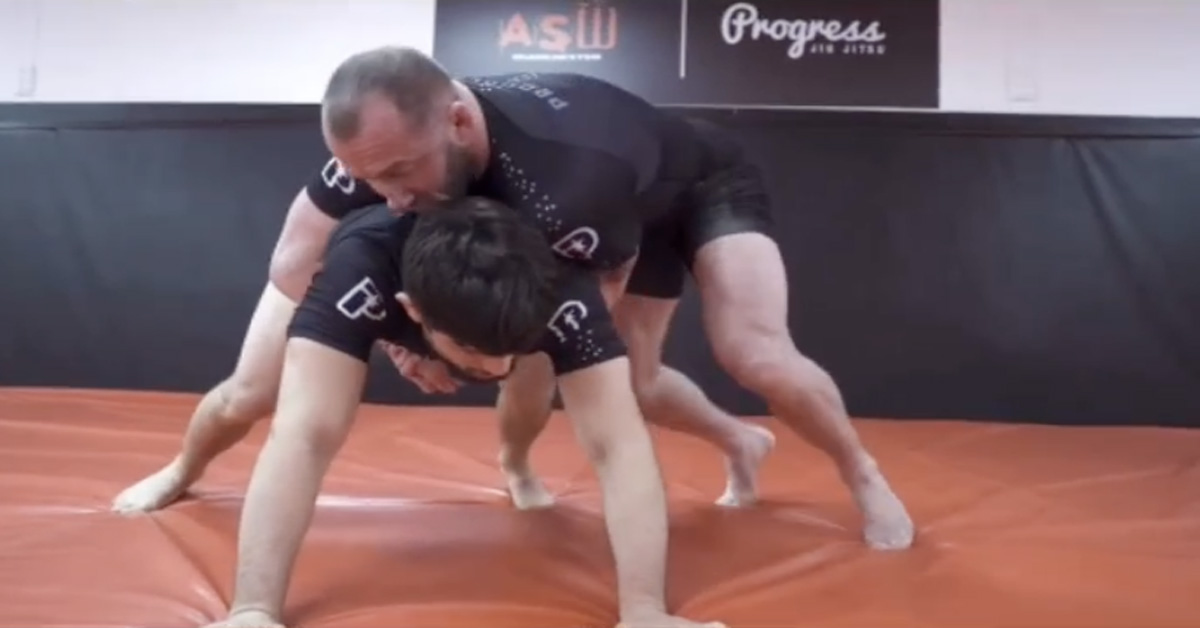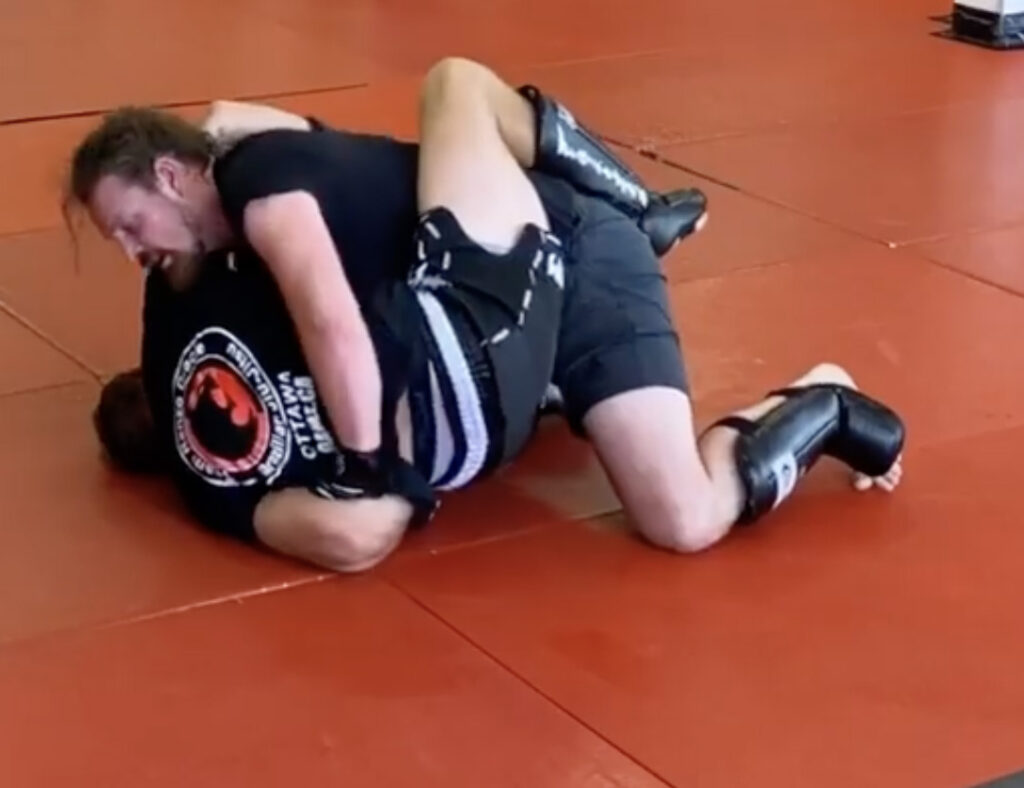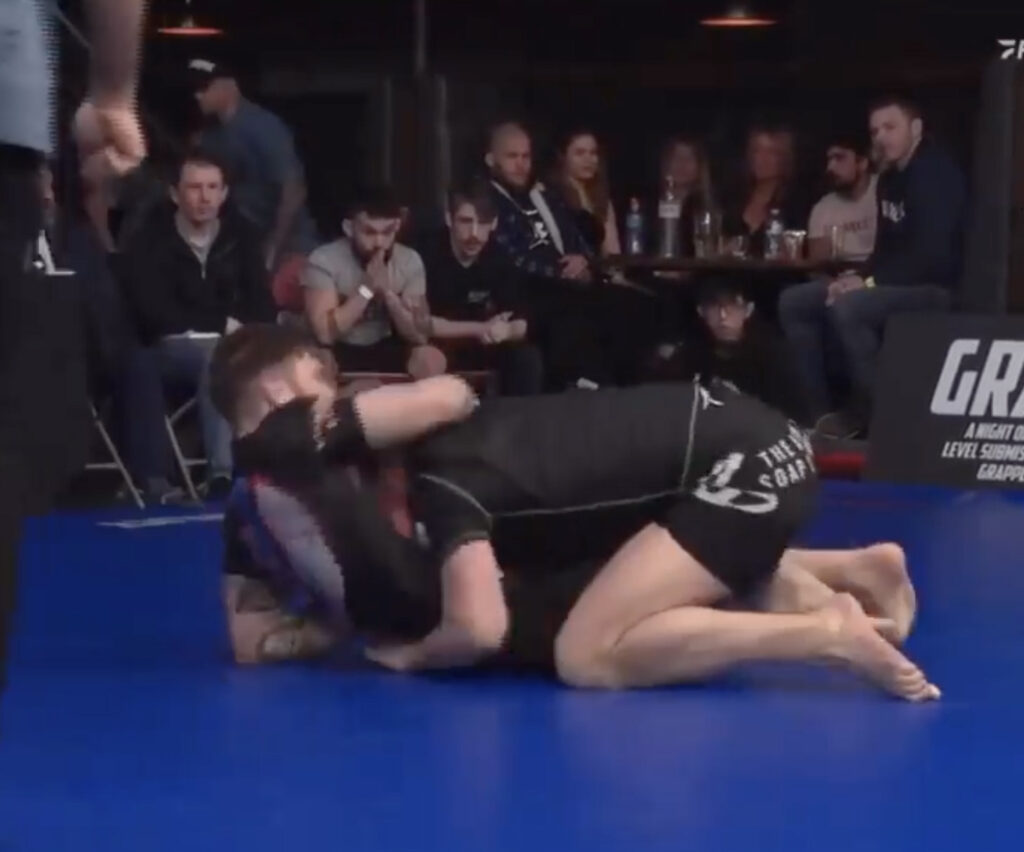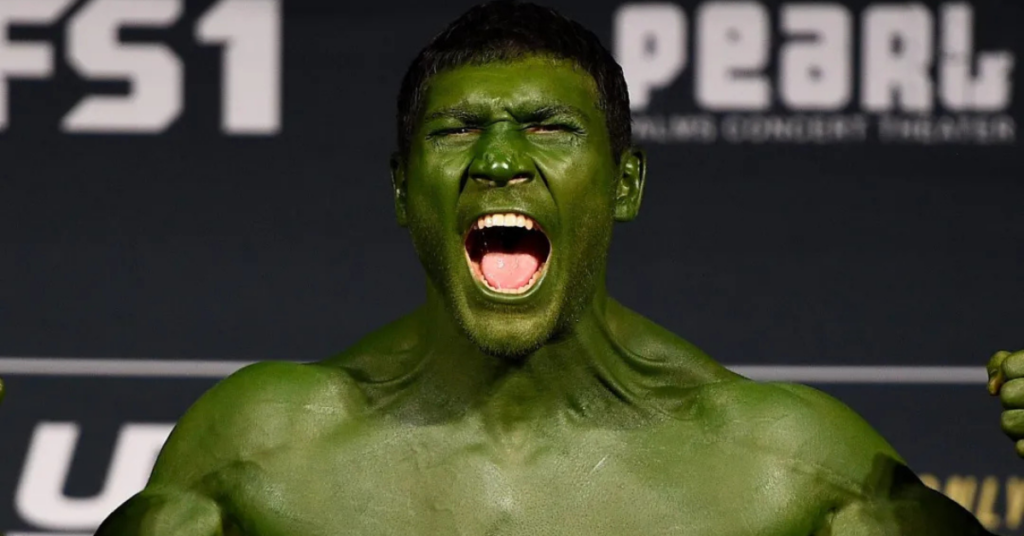Dagestani Handcuff – Everything You Need To Know

In MMA, Dagestani fighters have been taking over the sport. Using a variety of techniques that they were taught within Sambo and wrestling.
One of the signature moves of these fighters has been coined the “Dagestani handcuff.” A move that was used quite frequently by former UFC Lightweight Champion Khabib Nurmagomedov.
Let’s break down everything about the Dagestani Handcuff. We’re going to go over how it was developed and how the move works. Then we’ll go into various ways to use it, as well as list important tips for locking it in.

When was the Dagestani Handcuff created?
While this technique has been dubbed the Dagestani Handcuff, this isn’t the move’s original name. The original and most common name used for this technique is the hammerlock.
The hammerlock has been used for centuries within amateur wrestling, Sambo, and catch wrestling. In amateur wrestling, the maneuver is used to pin an opponent. Then within submission wrestling, the move would be turned into a submission.
Dagestani MMA fighters have utilized this move, which is why the hammerlock was nicknamed the Dagestani Handcuff.
Today this move has many variations that have different purposes. Everything from pinning an opponent, submission, guard pass, or just to expose an opponent’s face to land strikes.
How does the Dagestai Handcuff work?
The basic function of the Dagestani is quite simple, yet very effective. Using two arms on one of your opponent’s to put their arm behind their back gives you ultimate control over them.
With their arm trapped behind their back, they can do nothing, but struggle to recover control of their arm. This is why every law enforcement agency in the world uses this technique to control a suspect.
Once you lock on this handcuff, you can do just about anything you want to your opponent.

Dagestani Handcuff Armlock
The first Dagestani Handcuff technique we’ll detail is the armlock. This technique starts from when your opponent is in turtle and you’re on top of them.
In amateur wrestling, this is called a hip ride position. Your opponent will try to escape this position by raising up and either sitting out or turning into you.
To prevent that, grab a bodylock around your opponent’s chest. Then drive your shoulder under your opponent’s shoulder, and walk to the side to drag them to the mat.
From here, you’re going to keep them to the mat by taking wrist control and driving forward. They can still stand up, so to prevent this, push their leg down with your free hand and go to S-Mount.
In S-mount, triangle your legs together and drive forward to trap your opponent’s arm/shoulder to the mat. To get the armlock, back step out of S-mount, put two hands on their wrist, and push the arm up. Pushing it towards their shoulder to put intense pressure on their shoulder joint.
Dagestani Handcuff guard pass
The Dagestani Handcuff or hammerlock can also be used to pass your opponent’s guard. From your opponent’s guard, you start the set up by grabbing wrist control, and planting their arm to the mat.
Next, you’re going to bring your head to your opponent’s chin, come to your feet, and drive forward. When you do this it opens space between your opponent’s lower back and the mat.
This gives you the space to reach under your opponent and pass their wrist to your other hand. If they resist, you can walk your hips toward the arm you’re controlling and pass it from there.
Be sure to re-grab their wrist on the pass with a palm up grip to establish the best control. Now with their arm trapped, you can freely pass on that side of your opponent’s body.
Walk your hip towards their shoulder, push their knee down to open their guard, and pass to side-control.
Dagestani Handcuff to ground n pound(from guard)
In MMA, you can do the exact same movement as the guard passing technique to lay down heavy ground n pound. Grab hold of your opponent’s wrist, drive forward, and pass their arm to your other hand.
From here, you can land some strikes, but your opponent can still land a submission with their arm trapped. Especially if they are a good guard player.
So, to prevent this, you can step over their leg and triangle your legs together from half-guard. Their leg and arm is trapped and can do nothing to stop you from landing hard strikes.
Dagestani Handcuff to ground n pound(turtle position)
Instead of going for an armlock like in the first technique detailed above, you can handcuff to land powerful strikes. Start the technique by keeping your hip connected to your opponent’s with no space given.
Next establish control of their near side arm to keep them from getting an underhook on you and stand up. Then your other hand is going to reach under your opponent’s far arm and grab hold of their wrist.
With that wrist control, push their hand to their belly and drive forward to flatten them out. From here, you can throw a variation of strikes to either finish your opponent or open them up for a submission.
Dagestani Handcuff counter
While it seems like it’s almost impossible to get out of this handcuffing technique, there are counters being developed. One of them being this wrist to free your hand from your opponent’s handcuff.
The first step of this escape is to have your hand up defending strikes. You’re already in a bad position, so you have to be defending yourself at all times before it gets worse.
Turtle your head down to try and cover your head as you grab your wrist that the opponent is controlling. Once you grab your wrist, extend your back and straighten out your arm.
Then work to shuck your elbow around your opponent’s shoulder to give you space to turn into them. From here you can either try to recover guard or try a sweep.
Hammerlock from cross body ride
The cross body ride is where you hook your opponent’s leg and turn them to take their back. Instead of taking your opponent’s back you can go for a hammerlock.
You start with your legs triangled around your opponent’s legs going for a calf slicer. They extend their leg to defend and you use that momentum to move to their back.
As you move towards their back, grab wrist control on your opponent along with an underhook on their elbow. Holding their arm to your chest to establish control over it.
Next, use your control to push your opponent’s arm to the mat and towards their far armpit. Then take your arm hooking under your opponent’s arm out and hook from the top and cup their shoulder.
To finish this hammerlock, cup your other hand on top of their shoulder and pull it to your chest.
Tips for doing the Dagestani Handcuff
The Dagestani Handcuff is one of the most powerful controls in grappling, but you have to be flawless with the details. Here are some important tips for locking on the Dagestani Handcuff.
- Weight Distribution: When your opponent is in turtle and you’re on top, weight distribution is very important to remember. Keep your weight down and don’t lean forward or your opponent will escape or reverse you.
- Hip To Hip: Before going for the handcuff, your hip needs to be glued to your opponent’s hip. Any open space will allow them to escape.
- Wrist/Hand Control: As you reach under your opponent don’t just grab their wrist. For the best control, grab at the ridge of their hand near their pinky along with the wrist.
- Hand To Stomach: Right after getting control of your opponent’s wrist, bring it to their stomach and glue it to their body. Doing this will ensure that you have complete control over the arm.
- Flatten Them Out: After you establish control over your opponent’s arm, step to the side to drag them down, and flatten them out. When they are flattened out, you can either go for your arm lock or pound them out.
- Backstep: Remember before going for the Dagestani armlock that you have to backstep out to free the arm. It gives you the space and angle to take your opponent’s arm out and put on the pressure.






